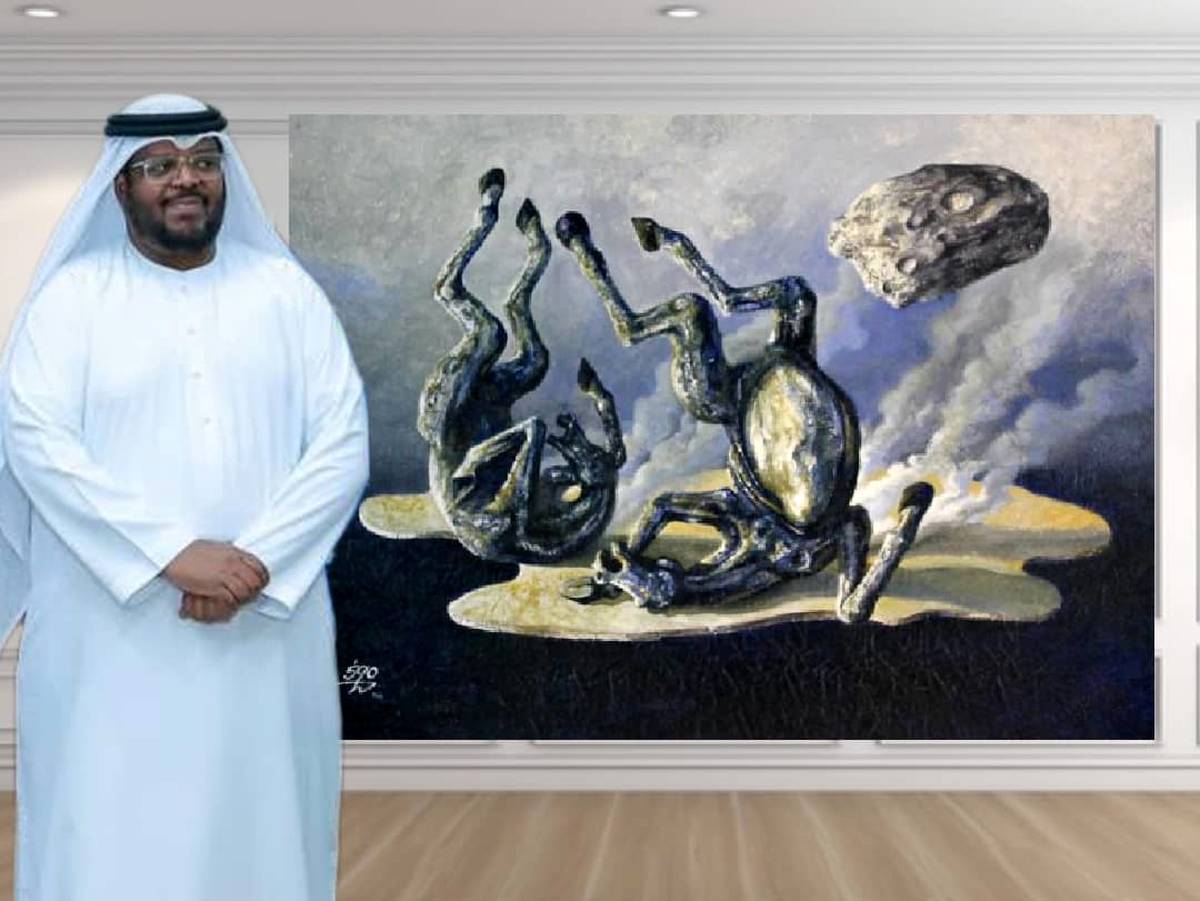
Moosa Al Halyan: When Horses Fall from the Sky – A Surreal Vision of Fragility
In a haunting scene where celestial fate collides with earthly fragility, Emirati artist Moosa Al Halyan’s Horse Painting (1996) captures more than the collapse of two horses—it embodies tradition, identity, and endurance in a world marked by inevitable change.
ArtDayMe :Azadeh Jafarian : When the horses fall in Moosa Al Halyan’s universe, they do not simply crash to the ground—they descend into allegory. Painted in 1996, Horse Painting is an oil on leather masterpiece that transforms one of the most celebrated symbols of Arab heritage into a surreal image.

The canvas—unconventional in its use of leather—absorbs the oils to produce a textured, almost living surface. Against this backdrop, two horses appear mid-collapse, their bodies sculpted in metallic grays and blues, their forms twisted like ancient relics. A meteor hovers above them, while smoke and pale liquid pools below, completing a scene that feels cosmic .
The color palette is restrained yet powerful: cold grays, soft blues, and muted whites evoke a lunar atmosphere, stripping the vitality from the horses and rendering them ghostly, fossil-like, suspended between life and ruin. The dramatic contrast between shadow and highlight intensifies the tragic spectacle, amplifying the sense of inevitability that permeates the work.
Symbolism is at the core of Al Halyan’s art. In traditions, the horse is a timeless emblem of freedom, nobility, and vitality. Yet here, the noble creature is undone, its collapse suggesting not only physical fragility but the erosion of ideals under the weight of history, progress, or fate. The meteor, meanwhile, embodies larger-than-life forces—whether cosmic destiny or social upheaval—that descend without mercy.

Placed within the larger art historical context, Al Halyan’s Horse Painting resonates with the dreamlike distortions of European surrealists such as Salvador Dalí or Max Ernst. But unlike Western surrealism, which often drew from the unconscious, Al Halyan’s horses are rooted firmly in cultural memory. They serve as living metaphors, embodying the Emirati struggle to reconcile tradition with the rapid transformations of the late 20th century.
“By painting horses instead of humans, I escape issues of discrimination and racism,” Al Halyan once explained—a decision that underscores his symbolic reliance on the animal as a universal proxy for human existence.

Born in Dubai in 1969, Moosa Al Halyan is a leading figure in Emirati surrealist painting and a long-standing member of the Emirates Fine Arts Society. He began exhibiting his work as early as 1984 and has since presented in major shows including the Sharjah Biennial, Bangladesh Biennial (2015), and the UAE Pavilion at the Venice Biennial. His contributions have been recognized with honors such as the EWA Award for Innovation in 2012 and the Dubai Government Excellence Programme in 2013.
Horse Painting remains one of his most striking works from the 1990s—a period when Emirati artists were exploring the tensions between modernity and heritage. It is tragic and monumental at once, a poetic reflection on fragility, and cultural endurance.


LEAVE A RELPY